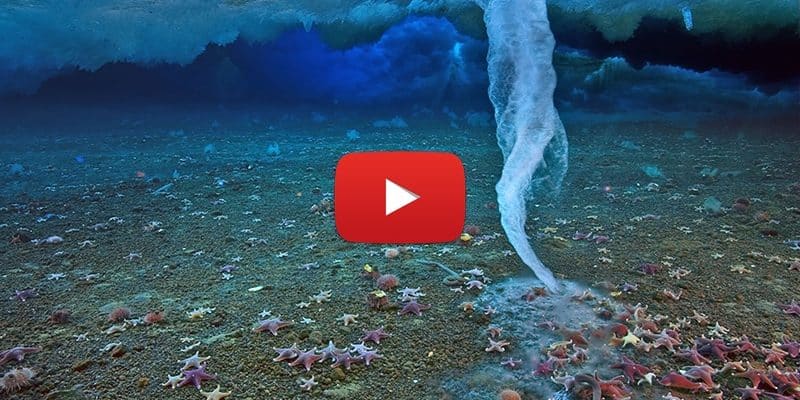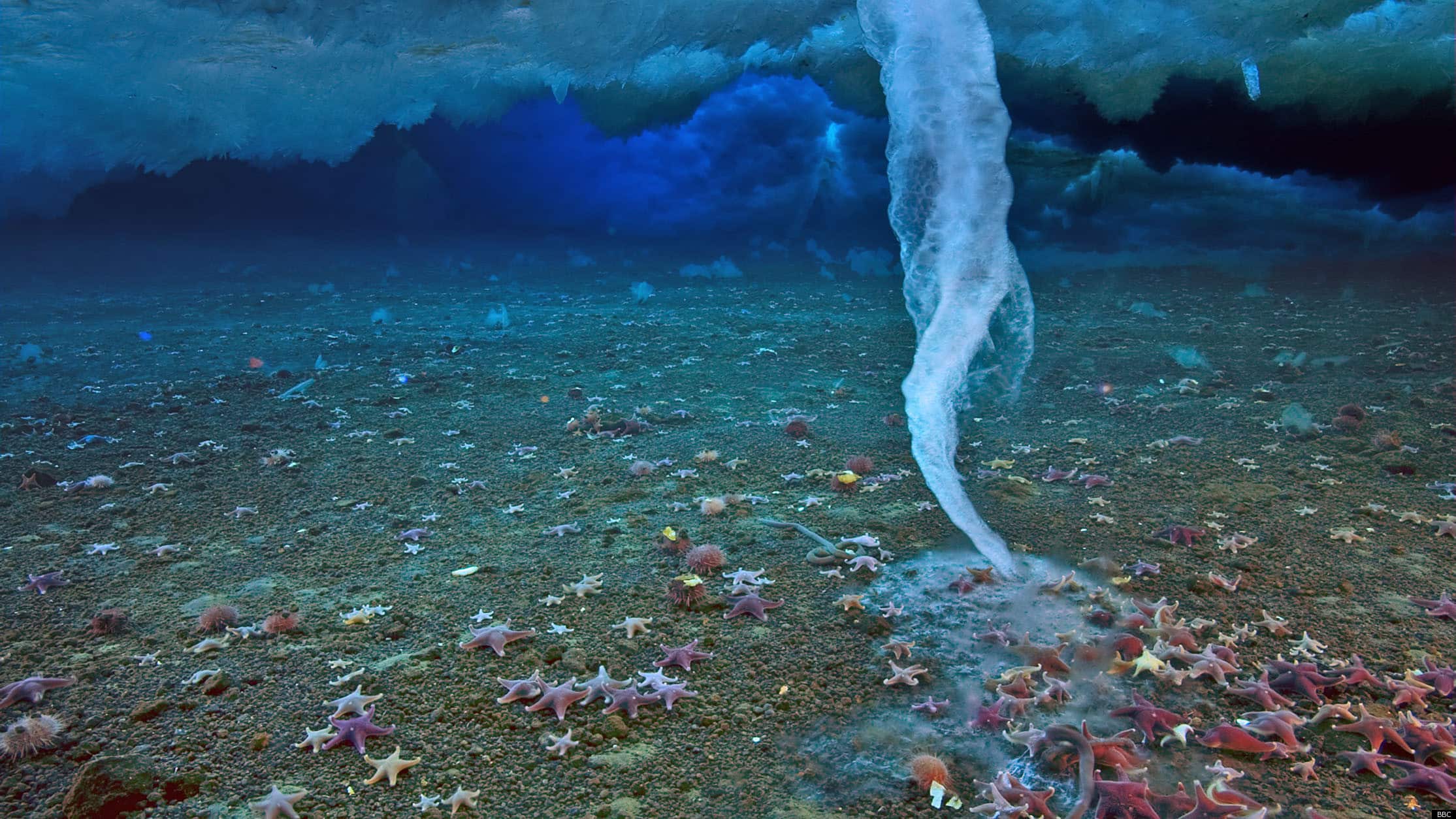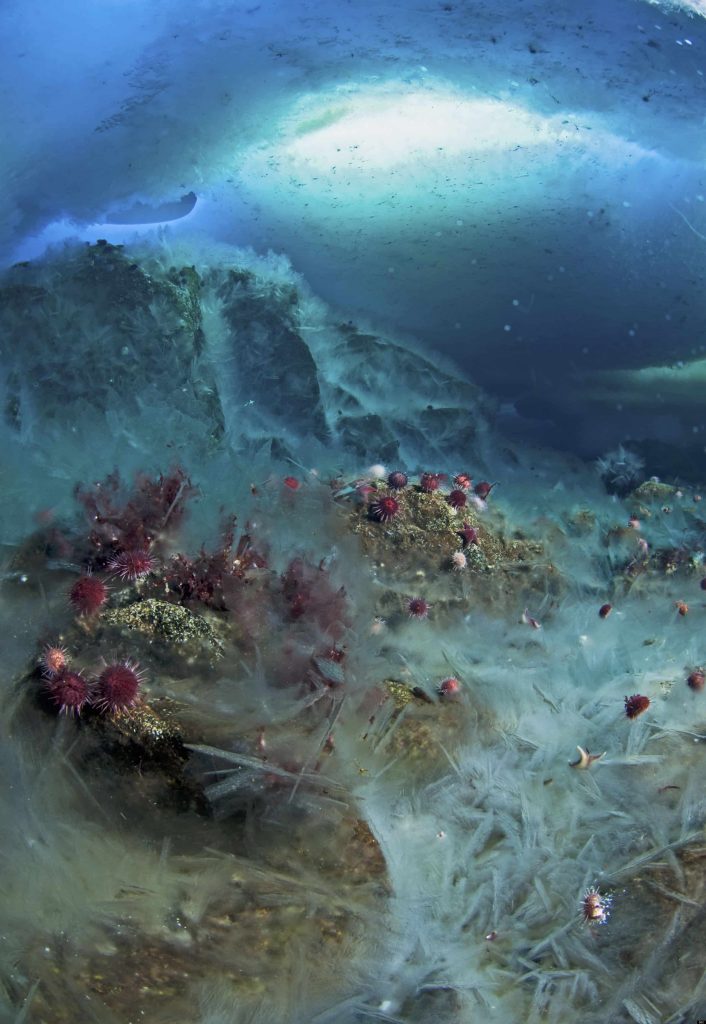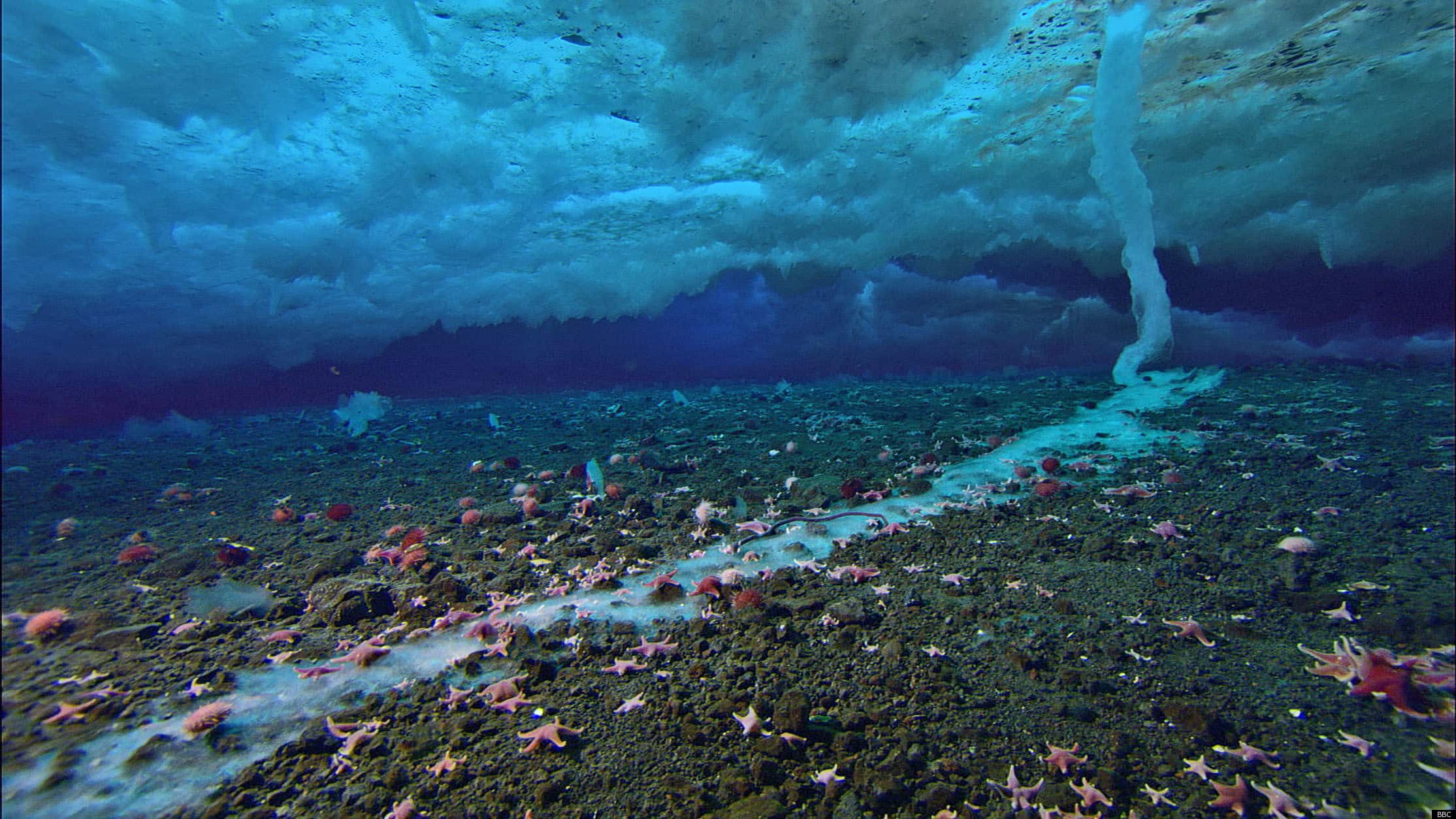W̶i̶n̶t̶e̶r̶ ̶I̶s̶ ̶C̶o̶m̶i̶n̶g̶ – Um fenômeno raro na natureza foi filmado pela primeira vez. O “brinicle” congela tudo o que toca, matando várias espécies no fundo do mar. Pela primeira uma equipe de filmagem da BBC conseguiu captar imagens de um fenômeno raro e difícil de ser registrado, ocorrendo apenas em águas geladas. O “brinicle”, também chamado de “dedo da morte” é na verdade uma espécie de coluna de gelo, formado por salmoura, congelando rapidamente tudo o que toca.
[toggle title=”Click: English Version” state=”close” ]Frozen Planet’s Brinicle: The Deadly Finger Of Ice That Kills All In Sight
(Video And Pictures) Fans of the BBC’s Frozen Planet were treated to the first ever footage of a brinicle, a deadly finger of ice that kills everything in its path. Starfish and sea-urchins shrivel up and die, encased in a “tomb of ice” as the frozen tornado whirls its destructive path to the sea floor.
The extremely salty ‘brinicle’ is not quite a solid icicle. The sea water is only forming a frozen ‘sheath’ around the cold saline, rather than freezing all the way through. Dr Mark Brandon, a polar oceanographer, described it as “a seawater-soaked sponge with a tiny network of brine channels within it.”
The salt-water icicle forms in calm seas when the freezing air above the surface is much colder than the sea. They first appear at the frozen surface of the sea. They used to be called ice stalactites until 1974, until a new theory was advanced as to how they are created.
David Attenborough’s erudite tones described the formation of the brine beam: “The salt in this newly formed ice is concentrated and pushed into the brine channels. And because it is very cold and salty, it is denser than the water beneath.”Filmed in frigid Antarctic waters at temperatures of minus two degrees celsius, cameramen Hugh Miller and Doug Anderson dived underwater at Little Razorback Island, near Antarctica’s Ross Archipelago.
Time-lapse filming equipment was set up, but navigating the icy ocean floor amid sea proved difficult. Inquisitive seals pushed the camera about. “That particular patch was difficult to get to. It was a long way from the hole and it was quite narrow at times between the sea bed and the ice,” explained Miller. “I do remember it being a struggle… All the kit is very heavy because it has to sit on the sea bed and not move for long periods of time. “The first time I did a timelapse at the spot a seal knocked it over,” said Mr Miller.
Cameramen expressed shock at how quickly the almost fantastical brinicle formed, telling the BBC “It was a bit of a race against time because no-one really knew how fast they formed,” said Miller. “The one we’d seen a week before was getting longer in front of our eyes… the whole thing only took five, six hours.”[/toggle]
O fenômeno ocorre da seguinte forma: em locais gelados como a Antártida, o congelamento da água salgada não provoca a formação de gelos sólidos como ocorre com a água doce, os famosos icebergs. O que ocorre é a formação de uma estrutura esponjosa com bastante água do mar concentrado de sal, com pequenos canais onde flui salmoura. Em estações de inverno na Antártida, o ar acima dos icebergs pode alcançar uma média de – 20ºC de temperatura. O mesmo não ocorre com a água do mar que fica em torno de – 1,9 ºC.
O calor sai naturalmente dos locais mais quentes, como o fundo do mar, para os mais frios, como o ar acima dos icebergs. Neste processo ocorre o congelamento de colunas, onde existe concentração de sal que acaba entrando pelos canais da coluna congelada, formando um “brinicle”.
Como o “brinicle” é mais denso que a água do mar pela concentração de sal, acaba descendo como se fosse um tornado, lembrando uma nuvem. Como é extremamente gelado, com temperaturas menores do que a água acaba congelando tudo em sua volta, quando toca o chão do mar, inclusive espécies marinhas como as estrelas-do-mar e ouriços que não conseguem escapar pela rapidez do congelamento. Confira o vídeo abaixo.
Fonte: Huffingtonpost/BBC




